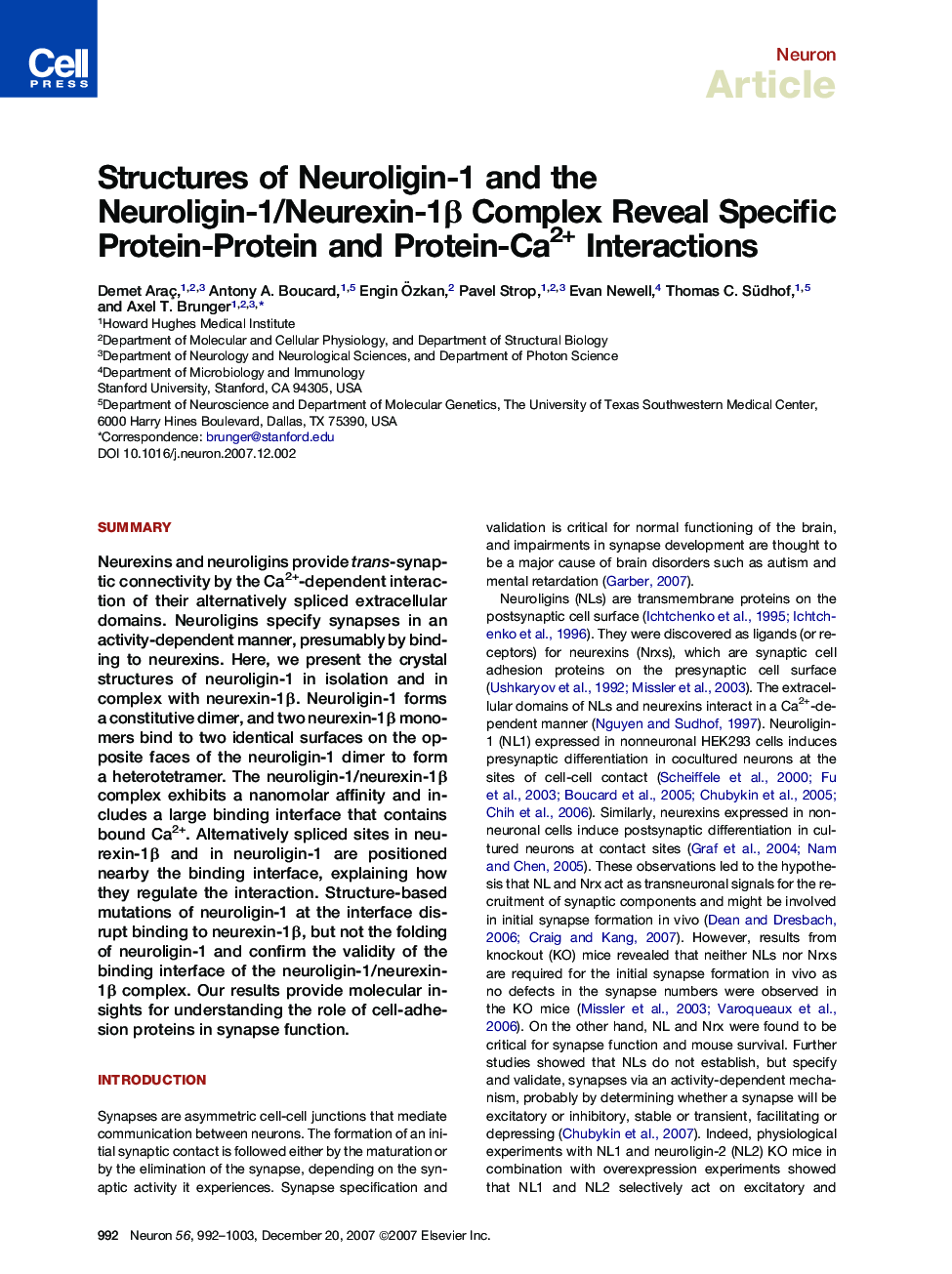| Article ID | Journal | Published Year | Pages | File Type |
|---|---|---|---|---|
| 4323191 | Neuron | 2007 | 12 Pages |
SummaryNeurexins and neuroligins provide trans-synaptic connectivity by the Ca2+-dependent interaction of their alternatively spliced extracellular domains. Neuroligins specify synapses in an activity-dependent manner, presumably by binding to neurexins. Here, we present the crystal structures of neuroligin-1 in isolation and in complex with neurexin-1β. Neuroligin-1 forms a constitutive dimer, and two neurexin-1β monomers bind to two identical surfaces on the opposite faces of the neuroligin-1 dimer to form a heterotetramer. The neuroligin-1/neurexin-1β complex exhibits a nanomolar affinity and includes a large binding interface that contains bound Ca2+. Alternatively spliced sites in neurexin-1β and in neuroligin-1 are positioned nearby the binding interface, explaining how they regulate the interaction. Structure-based mutations of neuroligin-1 at the interface disrupt binding to neurexin-1β, but not the folding of neuroligin-1 and confirm the validity of the binding interface of the neuroligin-1/neurexin-1β complex. Our results provide molecular insights for understanding the role of cell-adhesion proteins in synapse function.
